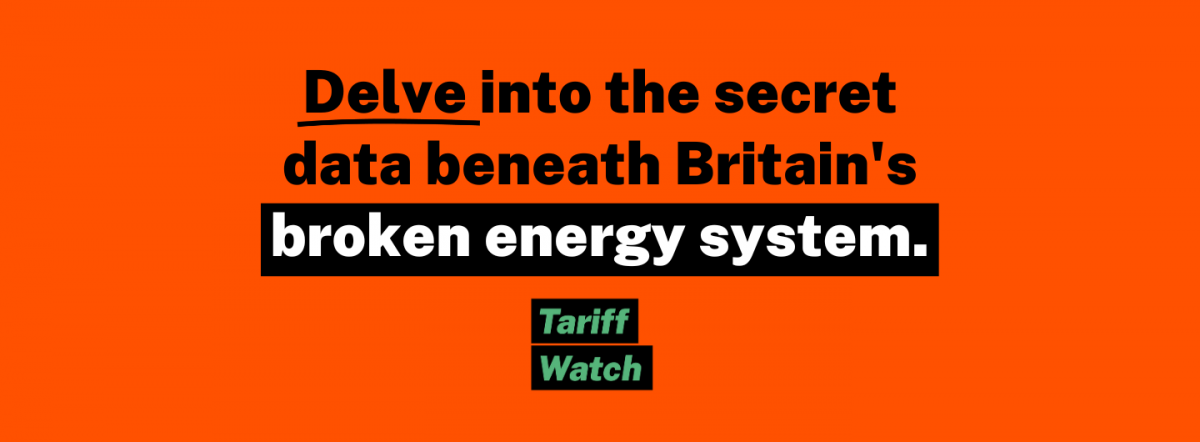Ministers should send a clear signal that they are on the side of consumers by reviewing nine sets of rules, according to campaigners.
As households count down to the next Ofgem price cap announcement on Friday (23 August), an analysis of recommendations from previous Warm This Winter Tariff Watch Reports [pdf] has identified ways regulators could cut bills.
While six recommendations from a series of Warm This Winter Tariff Watch Reports published during 2023 and 2024 have been implemented by Ofgem, a further nine proposals have not been acted on.
Chief among them are recommendations to bring down standing charges, cap exit fees and improve governance of the energy industry. [1]
The standing charge reforms could see a reduction in these annual charges on households by £152.06 (46% from £334.08 a year to £183.02).
Delivering these changes would require changes to Ofgem regulations and Government funding as well as action taken to protect low income and high usage households, such as those who rely on energy for medical needs.
This could include the introduction of a social tariff, which is backed by well over half the population according to recent polling by Opinium, and could be paid for through contributions from energy industry profits (producers, networks and suppliers).
Meanwhile, the loose regulation on exit fees has left bill payers at risk of being stuck on expensive fixed rate energy tariffs or with poor customer service as the cost of leaving a fixed tariff early would leave the household out of pocket.
Exit fees on energy bills have increased by 345% in the last three years. Around three million UK households have opted for fixed energy tariffs and the latest Warm This Winter Tariff Watch report shows that the majority have exit fees of more than £100. A snapshot taken in April 2024 found that 76% of fixed tariffs have annual costs above the Ofgem price cap.
Other rules which have been highlighted in Tariff Watch reports include a lack of transparency in energy firm ownership which has seen British households boost the profits of Chinese and Qatari Government-backed funds as the cost of the gas network has surged 38%.
Questions were also raised about the profits being made by energy firms due to an underinvestment in electricity infrastructure and 14 obscure charges to households’ electric bills.
Simon Francis, coordinator of the End Fuel Poverty Coalition, commented:
“These suggestions must be part of a road map to bring down energy bills, improve transparency in the industry and reset Britain’s broken energy system so it is on the side of consumers.
“While these changes to regulation won’t be enough to resolve all the problems we see, it would signal a welcome change in direction.
“We know the Government has the ambition to bring down bills in the long term, but it also needs to look at shorter term measures too.
“Ministers can earn the public’s trust by protecting vulnerable households, reducing energy debt, bringing in changes to energy meters, ramping up insulation programmes, reforming standing charges and ending energy industry profiteering.”
Fiona Waters, spokesperson for the Warm This Winter campaign which commissioned the reports, said:
“The new government has inherited a nightmare set of rules that are clear hurdles to creating the fairer energy system that the public are crying out for.
“With energy bills forecast to increase again in October, this problem is only going to get worse if new ministers do not step in now. Now is the time to bring back fairness with urgent action to support struggling households through the next winter and a commitment to end profiteering by properly taxing the wider energy industry.”
Dylan Johnson, from Future Energy Associates which compiled the reports, added:
“More can and should be done by the energy regulators.
“Overall, Ofgem must become more proactive in identifying problems with our energy system and more efficient in enacting the necessary changes to protect the most vulnerable in our society.
“For now, Ofgem must implement immediately actionable solutions and not shy away from making the key long-term decisions that can achieve a fairer, greener energy system.”
ENDS
Recommendations Addressed by Ofgem / Government (edition of Tariff Watch):
- Convergence of PPM and Direct Debit Prices (TW1): Ofgem implemented a levelling charge, balancing the standing charges between PPM and Direct Debit customers.
- Review of Wholesale Energy Allowances (TW1): Ofgem conducted a thorough review and concluded no systematic differences in costs.
- Reduction on EBIT Allowance (TW1): Ofgem revised the EBIT allowance to include both fixed and variable components.
- Market Stabilisation Charge (MSC) Removal (TW1): The MSC expired on March 31, 2024.
- Consumer Standards Consultation (TW2): Ofgem announced reforms to improve customer service, effective December 2023.
- New Prepayment Meter Rules (TW2): Ofgem set conditions for PPM installations, effective November 8, 2023, although these did not go far enough in addressing the concerns of all campaigners.
Recommendations Not Addressed by Ofgem / Government:
- Transparency in Cost Calculations (TW3a, TW3b): Ofgem has not improved the transparency or provided detailed breakdowns and machine-readable data formats for DNO and gas network costs.
- Clearer Explanations for Shifting DUoS and TNUoS Costs (TW3a): Ofgem has initiated a review but has not provided clear explanations or justified the cost shifts.
- Addressing Chronic Underspending by DNOs (TW3a): It remains unclear what specific actions Ofgem is taking to ensure adequate investment by DNOs.
- Dynamic Approach to Line Losses Calculation (TW3a): Ofgem has not implemented a dynamic framework for line losses.
- Management of Gas Network Decommissioning Costs (TW3b): Ofgem has acknowledged the issue but has not detailed specific steps to manage decommissioning costs.
- Ownership and Ethical Considerations (TW3b): Ofgem has not outlined specific actions to scrutinise and align gas network ownership with national security and ethical standards.
- Cap on Exit Fees (TW4): Ofgem has not implemented measures to cap exit fees or improve their transparency.
- Shift Costs from Standing Charges to Unit Rates (Standing Charge Report): Ofgem has closed their call for input on standing charges, but no further steps have been taken to move adjustment allowances, headroom allowances, profit allowances, payment uplift, and levelling costs entirely to the unit rate section of the bill.
- Shift Policy Costs from Standing Charges to General Taxation (Standing Charge Report): While the Labour Party has indicated a willingness to broadly address standing charges in their manifesto, no concrete steps have been taken yet to move policy costs from standing charges to general taxation.
The full report is available to download. Previous Tariff Watch reports can be downloaded from the reports and correspondence section of the EFPC website.






